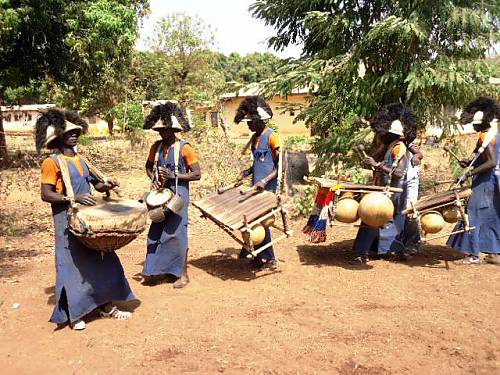الممارسات وأشكال التعبير الثقافية المرتبطة بآلة البلافون الموسيقية لجماعات "السينوفو" في مالي وبوركينا فاسو وكوت ديفوار
مالي, بوركينا فاسو و كوت ديفوار
مسجل في 2012 (7.COM) على القائمة التمثيلية للتراث الثقافي غير المادي للبشرية
عذراً، هذه الصفحة غير متوفرة باللغة العربية
The balafon of the Senufo communities of Mali, Burkina Faso and Côte d’Ivoire is a pentatonic xylophone, known locally as the ncegele. The ncegele is composed of eleven to twenty-one keys of varying lengths, made of wood, and arranged on a trapezoidal frame, also made of wood or bamboo. The instrument has calabash gourd resonators of varying sizes, arranged beneath the frame proportionally to the keys. The gourds are perforated and the holes are covered with spider’s egg-sac filaments to enhance the sound. The tuning of the ncegele is based on a division of the octave into five equal intervals, and the sounds are produced by striking the keys with wooden sticks with a rubber beater fitted to the end. Played solo or as part of an ensemble, the musical discourse of the balafon is based on a range of multiple rhythmic melodies. The ncegele provides entertainment during festivities, accompanies prayers in the parishes and in sacred woods, stimulates enthusiasm for work, punctuates funerary music and supports the teaching of value systems, traditions, beliefs, customary law, and rules of ethics governing society and the individual in day-to-day activities. The player first learns to play a children’s balafon, later moving on to full-size balafons, under the instruction of a teacher.









